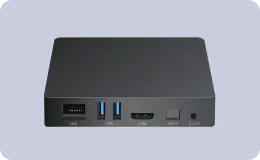Unveiling the Potential of Digital Kiosks in the Healthcare Industry
WRITTEN BY: TelemetryTV, 04-15-2024
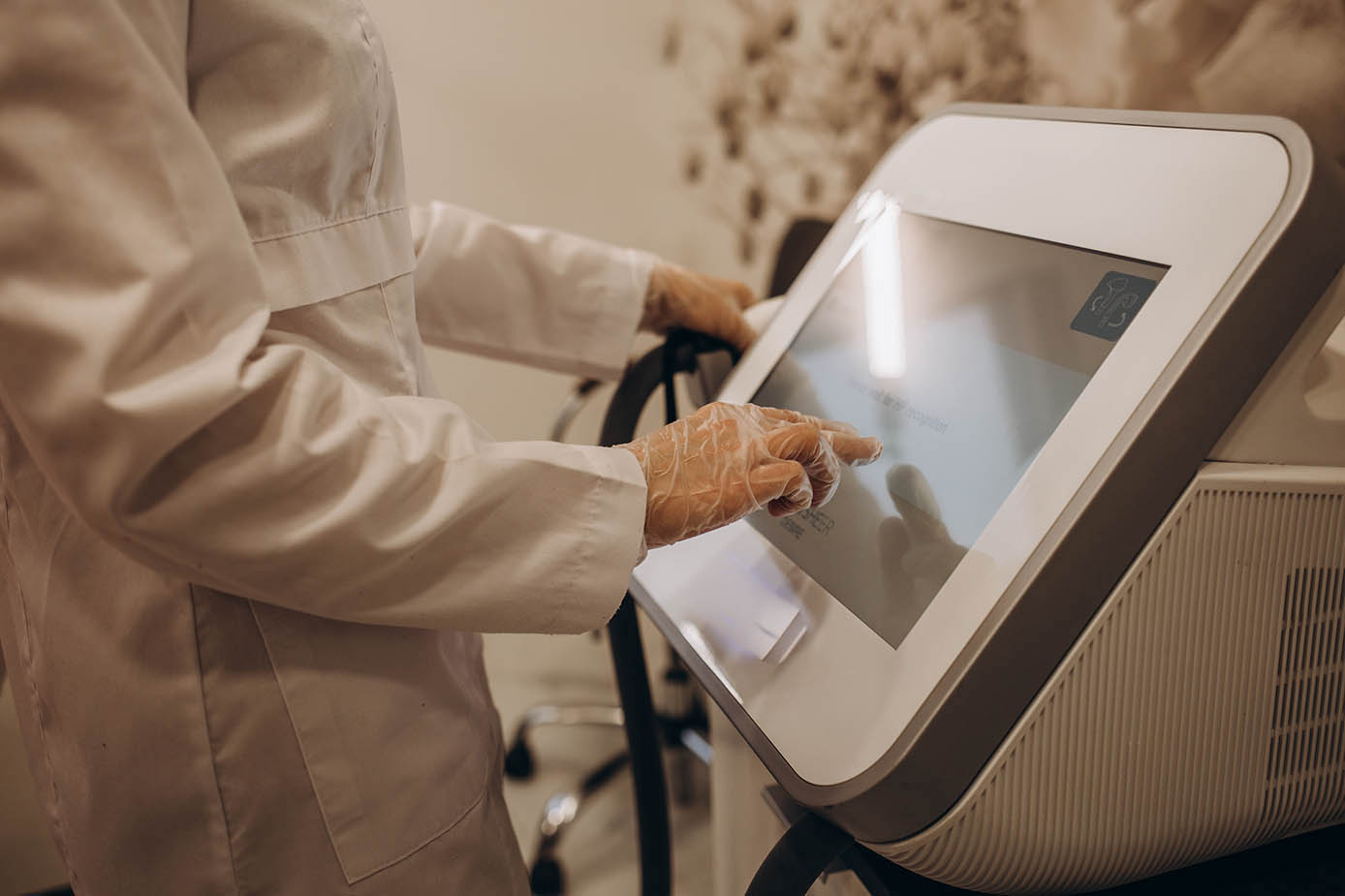
Healthcare kiosks, commonly found in clinics, hospitals, pharmacies, and practices, do more than just provide standalone services. They marry convenience, efficiency, and enhanced patient experience. They serve a multitude of purposes, from interactive digital displays to non-interactive informational boards, and offer remarkable benefits. These benefits include enhancing patient experience, streamlining operations, and improving data management. Let's explore how your healthcare organization can fully maximize kiosks.
Types of Digital Kiosks in Healthcare and their Benefits
Information Kiosks
Information kiosks provide valuable details about services, medical staff, or the healthcare facility, enhancing the patient experience by making it more informative and efficient. For healthcare providers, these kiosks act as a virtual assistant, supplying crucial information that can improve patient satisfaction.
Self-check-in Kiosks
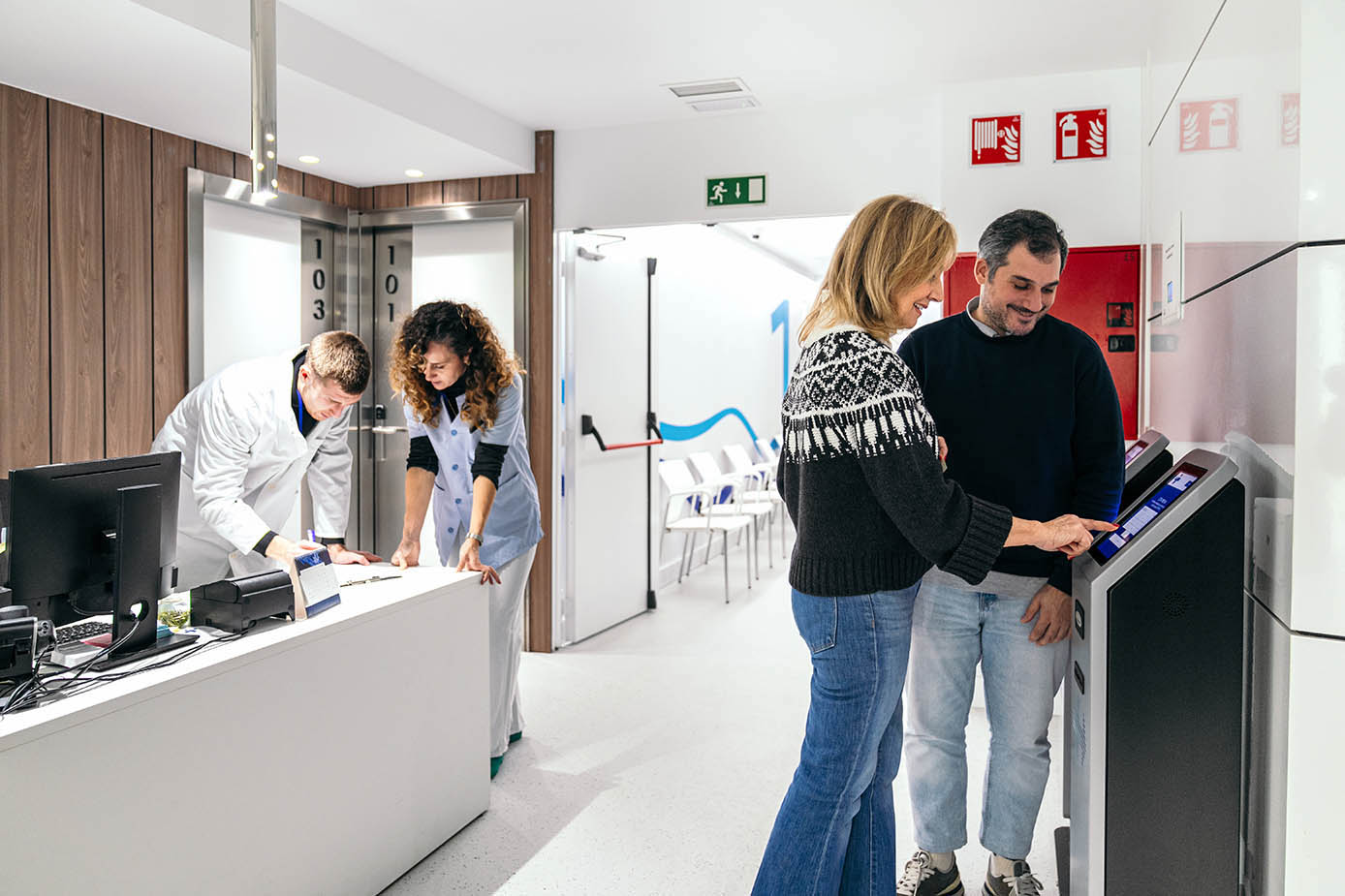
Self-check-in kiosks enable patients to register and pay for their appointments independently. This not only reduces wait times but also enhances the efficiency of the registration process. Healthcare providers can substantially benefit from these kiosks as they cut labor costs, speed up check-in, and potentially decrease the space required for traditional registration desks, thereby freeing up more space for patient care.
Prescription Refill Kiosks
Prescription refill kiosks streamline the process of refilling prescriptions, reducing the need for staff intervention. For healthcare providers, this means a more efficient process, freeing up staff time for other tasks and potentially improving patient satisfaction due to the convenience of self-service refills.
Wayfinding Kiosks
These kiosks simplify navigation in large hospital environments by offering maps and directions. They guide patients and visitors to their desired locations within a facility. By facilitating easier navigation, they enhance the patient and visitor experience. Healthcare providers also benefit as these kiosks can direct patients to specific departments or sections, improving organizational efficiency.
Patient Education Kiosks
Patient education kiosks utilize digital displays for sharing health information, promoting wellness programs, or providing dynamic content related to health services. They offer a flexible and attention-grabbing way to communicate with patients, which can lead to better patient understanding, enhanced brand recognition, and improved patient engagement.
Appointment Scheduling Kiosks
These kiosks allow patients to schedule, manage their appointments, and receive reminders. This provides direct benefits to healthcare providers by improving appointment management and enhancing patient satisfaction.
Challenges and Solutions
Despite their benefits, healthcare kiosks face several challenges, including the complexities of remote management, monitoring, timely updates, and the deployment of custom applications. Addressing these issues requires a robust digital infrastructure capable of supporting remote operations, ensuring the security and up-to-date functionality of the kiosks.
Remote Management and Monitoring
Advanced software solutions like TelemetryTV allow for the remote management and monitoring of healthcare kiosk systems, ensuring they run smoothly, display accurate information, and remain secure against unauthorized access or cyber threats.
Timely Updates and Custom App Deployments
Regular updates are crucial for maintaining the functionality and security of healthcare kiosk software. Custom app deployments can be streamlined through TelemetryTV’s content management and PaaS capabilities, enabling healthcare providers to quickly push new features or content to their kiosks.
User Experience and Accessibility
Designing intuitive and accessible interfaces is key to ensuring that all patients and visitors can benefit from the services offered by healthcare kiosks. This involves regular usability testing and updates based on user feedback.
Data Security and Privacy
Ensuring patient data protection is crucial for transaction-handling kiosks. This is achieved through robust encryption, secure payment gateways, and strict compliance with data protection regulations, providing a solid defense against data breaches.
Overcoming Patient Resistance to Technology
To overcome patient resistance to new technology, healthcare providers should educate patients, provide clear instructions, and highlight the kiosks' benefits. In-clinic support, an intuitive design, and gradual implementation can help patients adapt.
Implementation Strategies
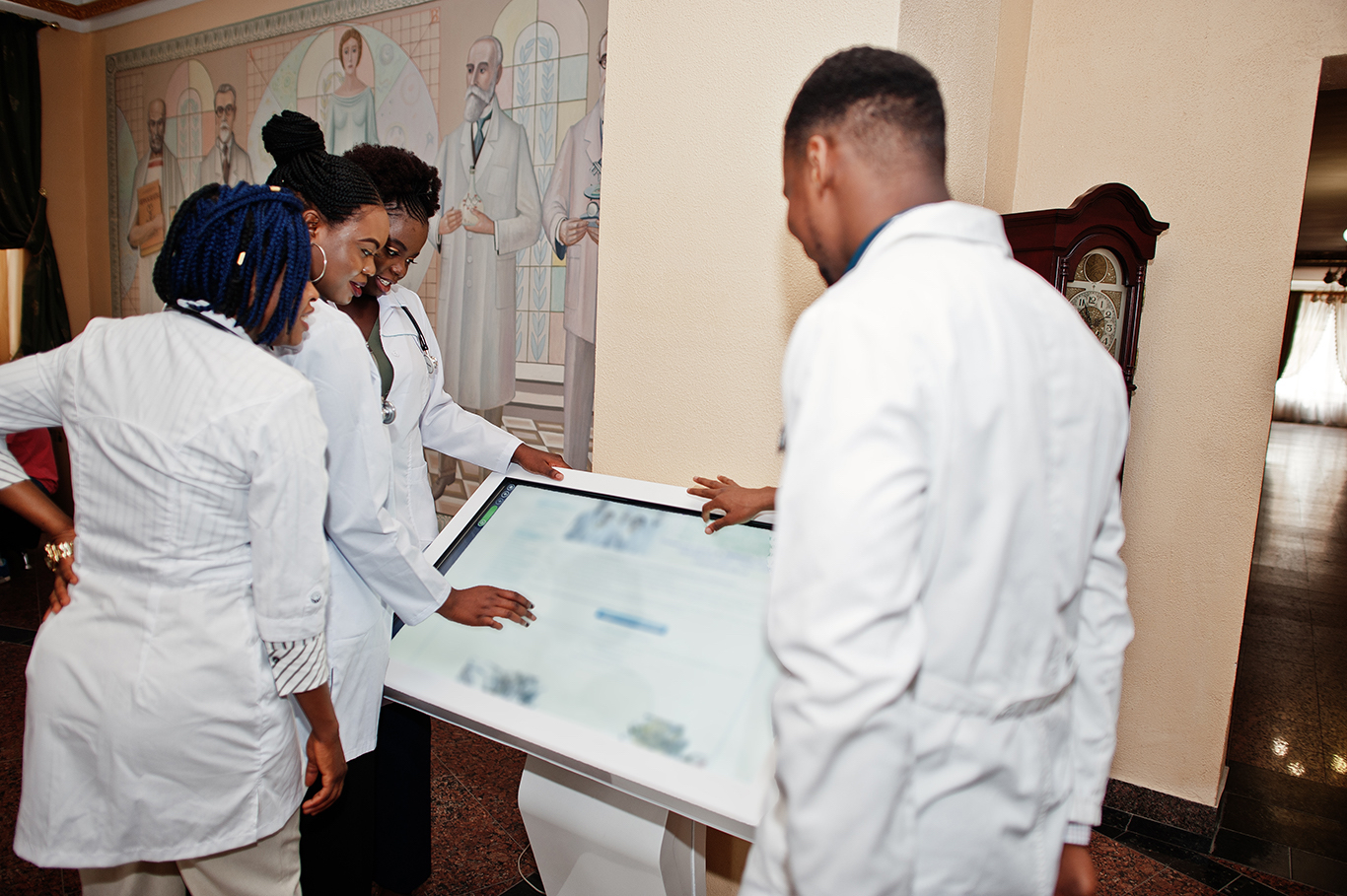
Successful rollout of healthcare kiosks requires a well-thought-out strategy, including identifying goals and KPIs, selecting appropriate kiosks, determining optimal location and layout, integrating with existing healthcare systems, and deploying the right software for content and device management.
Identifying Goals and KPIs
The essence of a successful kiosk implementation strategy is the clear definition of its objectives. Healthcare providers must pinpoint what they aim to achieve—be it enhancing patient experience, streamlining procedures, or improving data management. Alongside, setting tangible KPIs, such as reduced wait times, increased patient satisfaction, or improved data accuracy, allows for measuring the effectiveness of the kiosks against the provider's strategic goals.
Choosing the Right Type of Kiosk
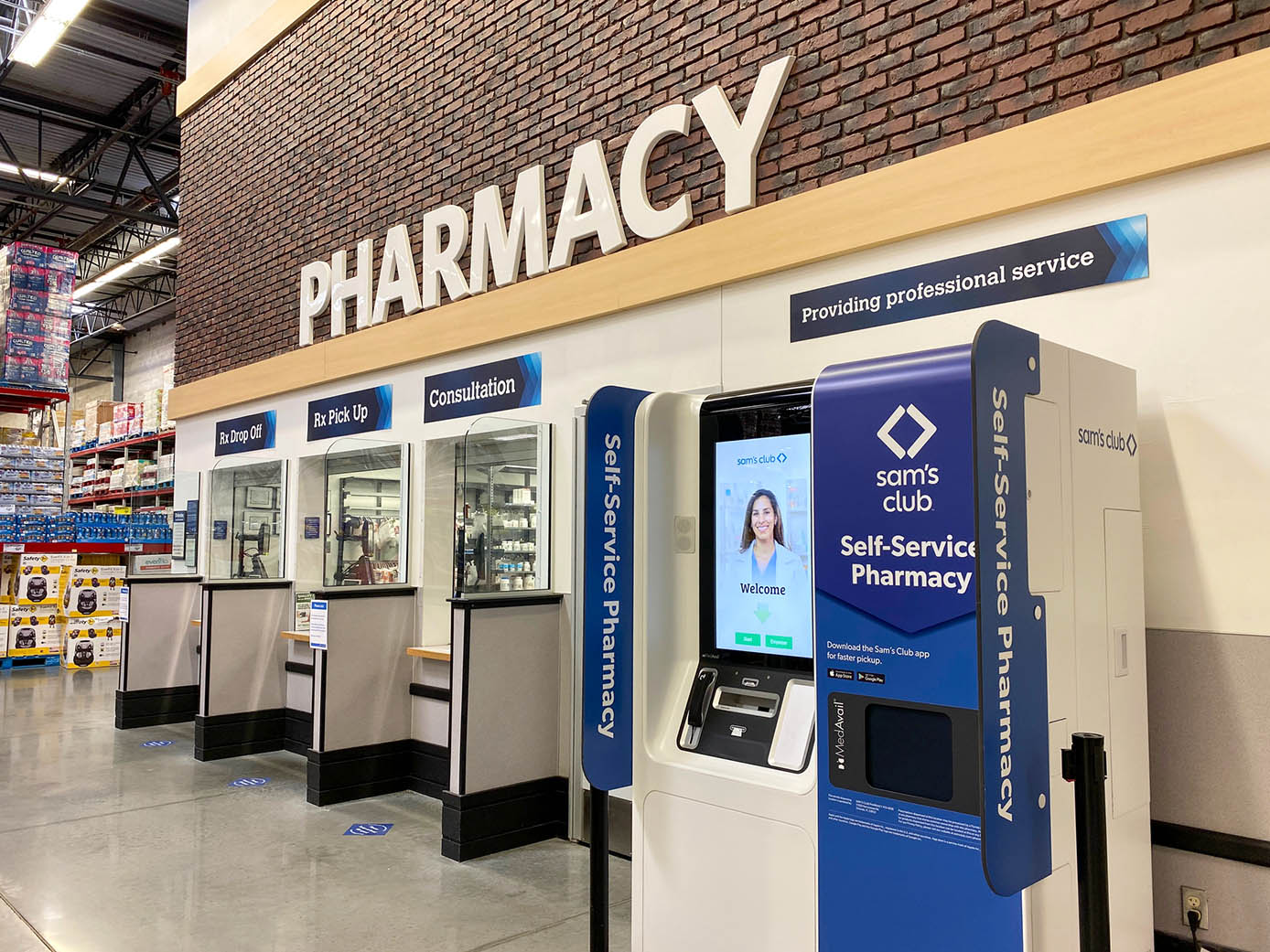
The selection of kiosk types should align with the healthcare provider's identified goals. Whether it's self-check-in kiosks, information kiosks, prescription refill kiosks, or wayfinding kiosks, each serves different purposes and caters to varied patient needs. Understanding the target audience and their preferences can guide the selection process, ensuring the kiosks add value to the patient's experience.
Location and Layout Considerations
The placement of kiosks within a healthcare facility is critical. Strategically positioned kiosks can serve more patients, enhance visibility, and ensure ease of access. Considerations include high-traffic areas like lobby, proximity to related services, and integration into the overall facility layout to encourage engagement and utilization.
Integration with Existing Healthcare Systems
For kiosks to deliver maximum benefit, they must be integrated seamlessly with the healthcare provider's existing systems. This includes patient management systems, electronic health records (EHR) systems, appointment scheduling software, and more. Integration ensures real-time data exchange, consistency in patient experience across touchpoints, and simplifies operations.
Software for Managing Content and Devices
The backbone of effective kiosk operation is robust software that enables remote management of content and device functionality. That’s where solutions like TelemetryTV come into play, offering robust capabilities for content updates, custom app development, device monitoring, and analytics. By leveraging such software, healthcare providers can ensure their kiosks display the most current information, operate efficiently, and deliver insights into usage patterns and patient preferences.
Conclusion
Healthcare kiosks combine technology and traditional care delivery to improve patient services and operations. Features such as self-service check-ins, digital signage for health education, and appointment scheduling contribute to an efficient patient experience. These kiosks also boost operational efficiency, optimize staff allocation, and provide valuable patient insights. However, they also pose challenges, including remote management, data security, and user-friendliness. By strategically planning, implementing suitable technology, and integrating seamlessly, healthcare providers can overcome these challenges and fully leverage the benefits of kiosks for both their organizations and the patients they serve.
Visual Communication. Everywhere.
Get started for free. No credit card required.

